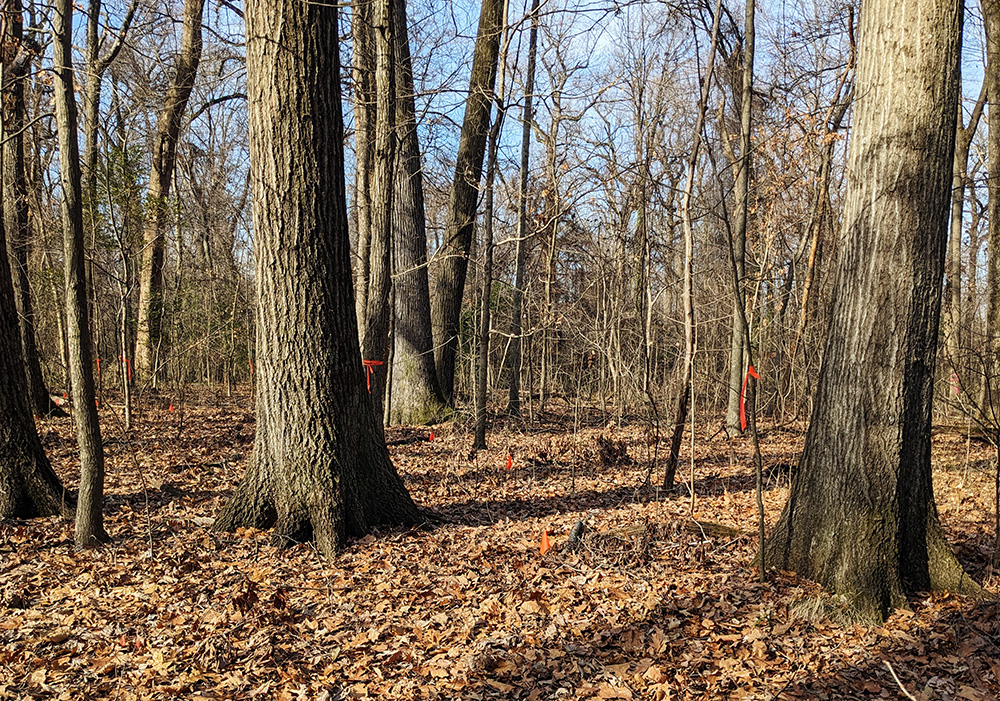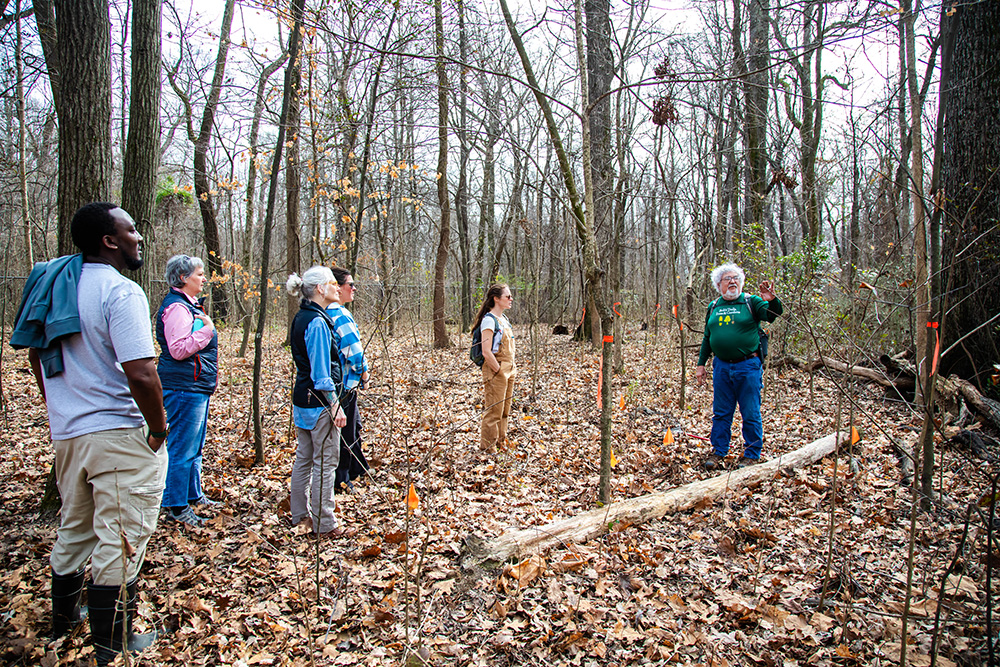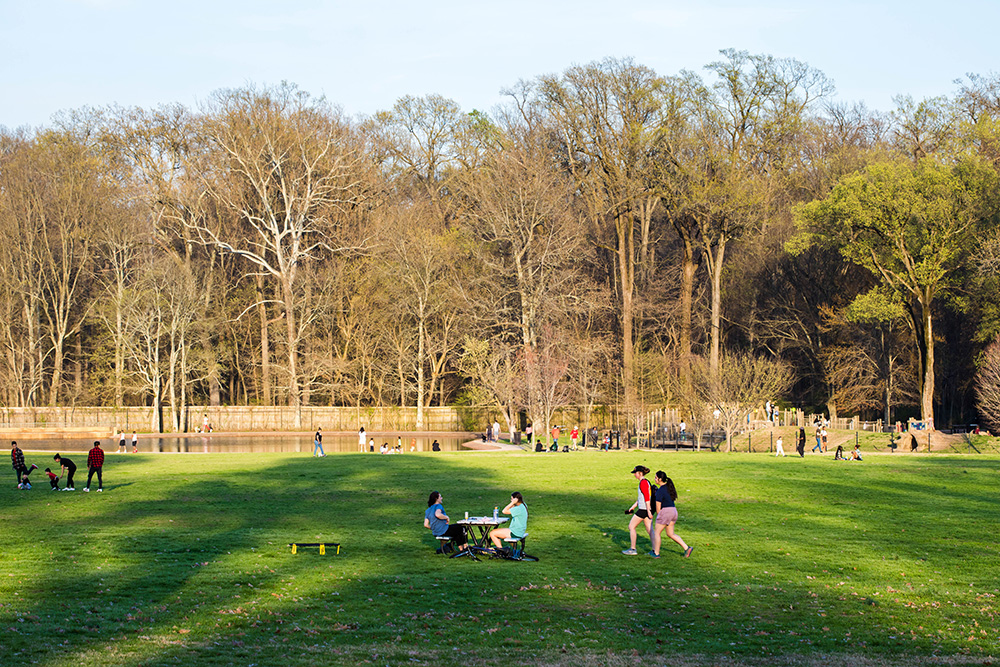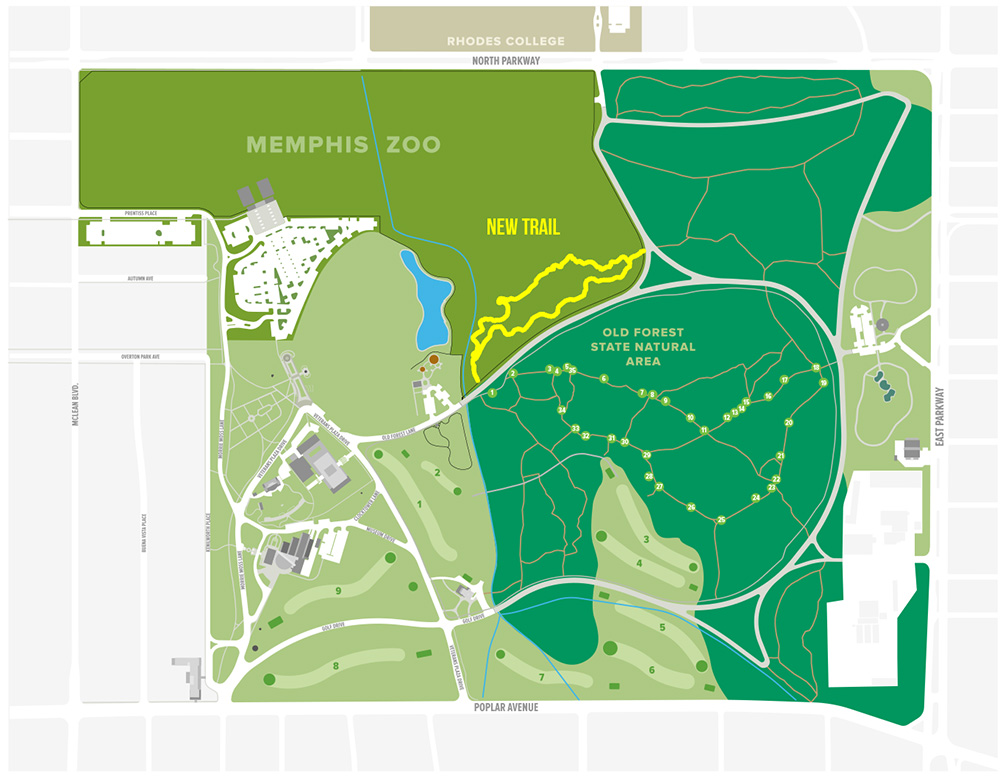New trails coming to Overton Park

If you’ve ever wondered what’s behind the fence that runs along the paved Old Forest trail, you’ll soon have the opportunity to see for yourself! Thanks to the Conservancy’s partnership with the Memphis Zoo, the boundary fence that’s kept over a dozen forested acres separate from the 126-acre Old Forest State Natural Area will be coming down.
Over the past several months, the Conservancy has been working A2H – Engineers + Architects to create an initial design for the trail. A2H has contracted with experienced trail planner Bob Richards of Bob’s Trails, Trees & Gardens to design a path that will connect to the existing trail system. (That’s what all the orange flagging behind the fence is about!) The trail is designed to take advantage of the varied topography of this section of forest, maximizing views and providing habitat value.
The new trail is a simple loop, because the tract isn’t large enough to support a labyrinth of trails without doubling back on itself. It will link up to the current trail system at two points: at its southern edge, it will connect to the beginning of the Old Forest Loop, and at its eastern edge, it will connect to the Green Trail. The loop design will also allow us to use less heavy equipment than a more complex trail would have. Minimizing impact during construction will allow the plants in the landscape to recover more quickly.

The Conservancy team recently walked the new route with Bob Richards, and we were able to see the same spring wildflowers popping up that we’re accustomed to in the rest of the forest. The topographical variation of the site also creates some interesting habitat juxtapositions: we noticed a cottonwood tree (which prefers low, wet areas) less than 100 feet from a white oak (which prefers to be high and dry). Like the rest of the forest, this area also features thousands of pawpaw trees and some impressive vines.
But there are some challenges. This section of forest is heavily affected by invasive species like Chinese privet, liriope, nandina, cherry laurel, and English ivy. Much like the heavy invasive removal project the Conservancy undertook in our first few years of managing the State Natural Area, we’ll need to do a major first pass at getting the invasives out. We’re contracting with Invasive Plant Control for this initial work, and then we’ll add this acreage into our volunteer-managed program. “Invasive removal is never one and done,” our Director of Operations, Eric Bridges, says. Once we remove a plant, something’s going to grow in its place, and we want that to be something native rather than another invasive. As part of a grant from the Tennessee Department of Agriculture – Division of Forestry, we’ll combine the control of harmful plants with efforts to re-seed native white oaks in their place.

This 17-acre section of forest was part of a 33-acre tract that Memphis City Council added to the Zoo’s managed area as part of the Zoo’s 1988 master plan. The other 16 acres became exhibits like Teton Trek, while this section was slated to include an exhibit focused on the local forested ecosystem. The Conservancy is incredibly grateful to the Zoo for choosing instead to reconnect this acreage with the remainder of the forest, allowing us to apply all the knowledge we’ve gained from managing the State Natural Area since 2012.
Preserving this section of forest also has impacts beyond the 17 acres. Some of the tall trees, including some striking white-barked sycamores, are highly visible from the Greensward and make up a significant portion of the view across Rainbow Lake. Enabling this ecosystem to thrive will benefit not just the trees themselves, but the iconic view that people expect from the Greensward.
We anticipate the trails to open up by the end of 2024, depending on what we find when we begin invasive removal and construction. Stay tuned for updates as we get construction started!
Seed funding for this project comes from a federal appropriation secured by Congressman Steve Cohen, which will also go toward other components of the Greensward parking solution, including relocating the Zoo’s maintenance area, constructing a new parking lot at the Zoo, and helping us create a new soft-surface loop trail on the Greensward. But we’ll need your help to fully fund the project! Financial support for the Conservancy’s day-to-day operations allows us to maintain Overton Park while simultaneously pursuing major improvement projects like this one. Please consider making an additional contribution in 2024 to support operations and park improvements. You can donate now at overtonpark.org/give.




